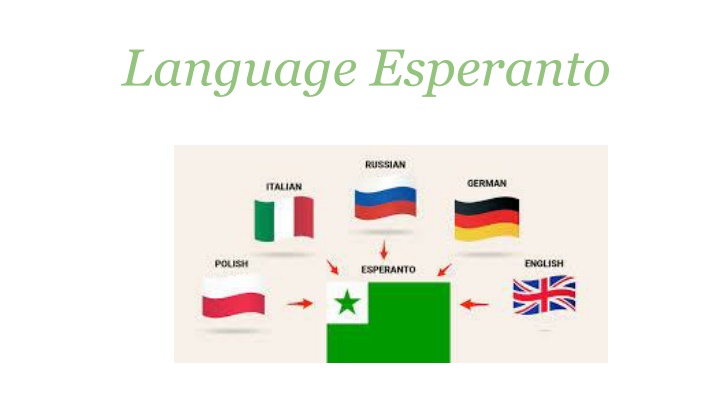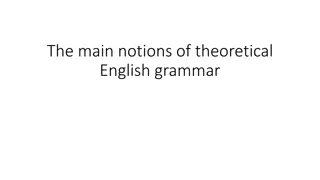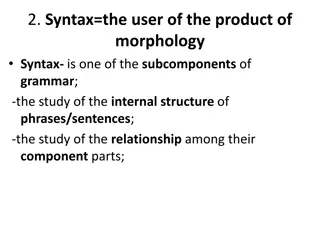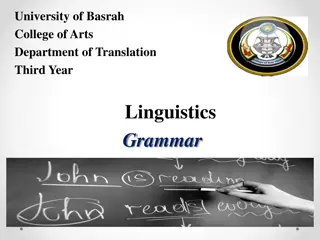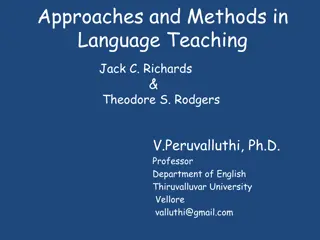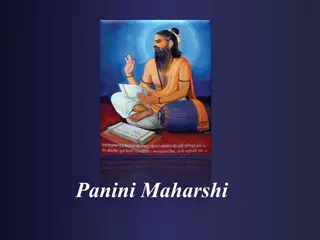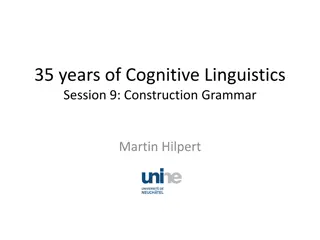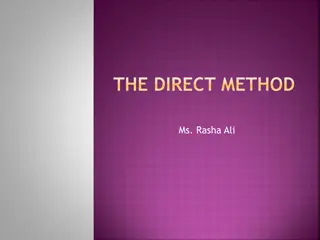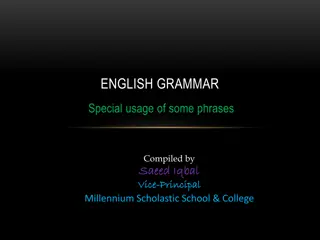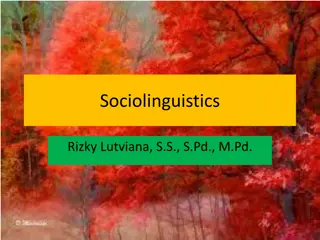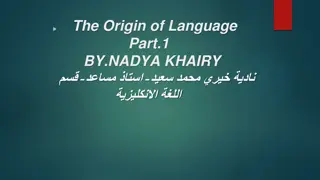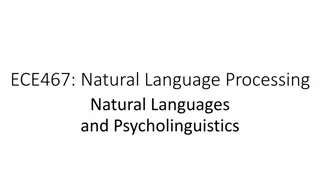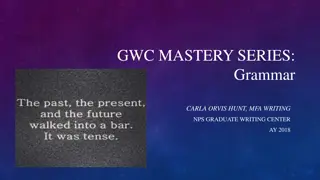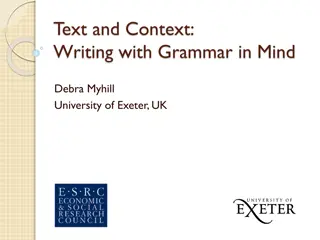Overview of Esperanto Language: Origins, Usage, and Grammar
Esperanto is an international auxiliary language created by Ludwik Zamenhof in 1887. It is known for its ease of learning and widespread use worldwide. The language has official recognition, with organizations like UEA maintaining relations with UNESCO and other international bodies. Esperanto is taught in some colleges and has a unique grammar system where nouns end in "o," adjectives end in "a," and adverbs end in "e." It is a fascinating language with a simple structure and efficient vocabulary.
Download Presentation

Please find below an Image/Link to download the presentation.
The content on the website is provided AS IS for your information and personal use only. It may not be sold, licensed, or shared on other websites without obtaining consent from the author.If you encounter any issues during the download, it is possible that the publisher has removed the file from their server.
You are allowed to download the files provided on this website for personal or commercial use, subject to the condition that they are used lawfully. All files are the property of their respective owners.
The content on the website is provided AS IS for your information and personal use only. It may not be sold, licensed, or shared on other websites without obtaining consent from the author.
E N D
Presentation Transcript
Origin the most widely used international auxiliary language in the world. Its name comes from the nickname "Dr. Esperanto , under which Ludwik Zamenhof published the basics of the language in 1887 in the book International Language.
Use Esperanto is by far the most famous and widespread project of the international language. There is a wide divergence in estimates regarding the number of Esperanto users. The estimate at the level of 1.5 million was made in the 1980s by prof. Sidney Culbert of the University of Washington in her study on the most used languages.
Official status and recognition Universala Esperanto-Asocio (World Esperanto Association, UEA) maintains official relations with UNESCO, the United Nations, UNICEF, the Council of Europe, the Organization of American States and the International Organization for Standardization (ISO). Efforts were made to award her the Nobel Prize in 2009, supported, inter alia, by by law by the Sejm of the Republic of Poland. In 2009, Mongola Esperanto-Societo (Mongolian Esperanto Association) became the 70th national Esperanto organization affiliated with UEA. National associations of Esperantists operate in 19 African and 21 Asiancountries.
Teaching Some colleges include Esperanto in their linguistic programs, others offer Esperanto as a separate subject. The Adam Mickiewicz University in Pozna conducts 3-year studies in interlinguistics focusing on Esperanto and using it as the language of instruction.
nouns end in o adjectives end in a adverbs end in e plural words ending j (pronounced "y" to "yellow") Grammar The vocabulary is changed by adding a suffix (change to the end of a word) or a prefix (change to the beginning of a word) to say the opposite of the word (just as we do with "im possible" and "un breakable"), we add mal at the beginning of that. So bela, which means "beautiful / handsome", becomes malbela ("ugly"). for diminutives (words that have been changed to make them look smaller or prettier, e.g. "dropl et" and "dog gy"), add et just before the last o (because, as said before, all nouns end in o) . Libro means "book", libreto means "book". in the case of extensions (words that are changed to make them appear larger, eg "super market" and "grand master") we add eg at the end of words. Rivero is "river", riverego means "big river". Language is also efficient because it doesn't contain many words. For example, to express a group of the same kind, such as a herd of cows, simply add an aro to the end. Bovino is a word meaning "cow" and bovinaro means "herd of cows".
Music Music performed in Esperanto covers a variety of genres such as folk songs, rock, cabaret songs, solo and choral works, and opera. Active performers include the Swedish band La Perdita Generacio, the Occitan singer JoMo, the Finnish band Dolchamar, the Kazakh duo omart kaj Nata a, the Frisian group Kajto and the Polish bard Georgo Handzlik. Some famous composers and artists, such as Elvis Costello and Michael Jackson, have also recorded in Esperanto, composed pieces inspired by this language, or used it in their promotional material. The band, popular in the 1980s in Czechoslovakia, after the great success of their first album (250 thousand copies sold), also recorded its Esperanto version. Classical works for orchestra and choir with Esperanto texts include Lou Harrison's La Koro Sutro and the first symphony in Esperanto by David Gaines. In Toulouse, France, the Vinilkosmo record label specializes in the production of Esperanto music. The main online collection of song lyrics in Esperanto KantarViki exceeded 3,000 songs in April 2013, including both original and adapted from other languages.
Classification Esperanto is an artificial language and is therefore not genealogically related to any ethnic language. They can be described as a language with an eminently Latin and Germanic vocabulary. From the point of view of morphology, it is a mostly agglutinating language with little analytical tendency. Phonology, grammar, lexis and semantics are essentially based on Indo-European languages from Europe. Pragmatic and other aspects were not defined in Zamenhof's original writings. Typologically Esperanto is a post-positional language and the default sentence order is SVO. Adjectives can be freely placed before or after the nouns they define, but they are more often placed before a noun. New words are created through extensive prefixing and suffixing.
